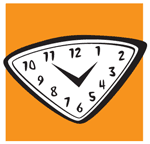Timely Tips: June 2014
 Plant: Hot-weather, tropical annuals for summer color. New turfgrass from seed, sod, plugs or by hydromulching. (Be prepared to water the new grass daily. Be sure that meets any water curtailments in place in your town.) Trees, shrubs, vines and groundcovers. Watch for end-of-season specials for best savings. Hand-water these new plants for their first summer to help them thrive. Sprinkler irrigation alone will not be enough. Crape myrtles in bloom, to ensure exact flower color. Tomatoes for fall garden late in month. As always, plant small and mid-sized fruit for best production: Celebrity, Tycoon, Porter, Sweet 100, Red Cherry, Yellow Pear.
Plant: Hot-weather, tropical annuals for summer color. New turfgrass from seed, sod, plugs or by hydromulching. (Be prepared to water the new grass daily. Be sure that meets any water curtailments in place in your town.) Trees, shrubs, vines and groundcovers. Watch for end-of-season specials for best savings. Hand-water these new plants for their first summer to help them thrive. Sprinkler irrigation alone will not be enough. Crape myrtles in bloom, to ensure exact flower color. Tomatoes for fall garden late in month. As always, plant small and mid-sized fruit for best production: Celebrity, Tycoon, Porter, Sweet 100, Red Cherry, Yellow Pear.
Prune: Erratic growth from shrubs to maintain natural form. Pinch flower buds out of santolina, lamb’s ear, coleus, caladiums. Blackberries following harvest. Cut canes that bore fruit completely to ground — they will never bear again. Tip-prune new shoots to force side branching and to keep plants more compact. Remove lower limbs from shade trees if excess shading threatens your turfgrass. Wait until mid-July to prune oaks, to lessen chance of oak wilt problems.
Fertilize: Lawn and landscape plants, flowers and vegetables, all with the same fertilizer. If you’re in a sandy soil, use a high-nitrogen fertilizer such as 20-5-10 or 24-6-12. In clay soil, apply a quality all-nitrogen food such as 24-0-0. Apply water-soluble and timed-release fertilizers to container gardens. Use the liquid for quick growth and the encapsulated type for sustained feeding. (If you are currently in extreme water curtailments, feedings of landscape plants and lawns perhaps should be saved until early fall. Ask your local independent nurseryman.)
On the Lookout: If you are seeing rose rosette virus in your rose beds, dig and destroy the affected plants. Do a quick web search to see photographic examples if you’re unsure. For whatever reason, RRV has been far more prevalent in the DFW area than elsewhere in Texas. Watch for early blight causing lower leaves of tomatoes to develop yellow blotches the size of fingerprints. Keep foliage dry, and apply labeled fungicide. Bagworms stripping needles off junipers, cypress, cedars: watch daily for first signs, then treat with B.t. or a labeled inorganic control. They are easy to eliminate if you treat before damage becomes extensive. Young larvae will be very small. Webworms in pecans, other trees: use long-handled pole pruner to remove at first signs of outbreak. Spraying is not easy, nor efficient. Gray leaf spot causing blades of St. Augustine to develop b-b-sized, diamond-shaped gray/brown spots: applications of nitrogen in hot weather accelerate this disease. If it’s present, wait until September to feed again.

